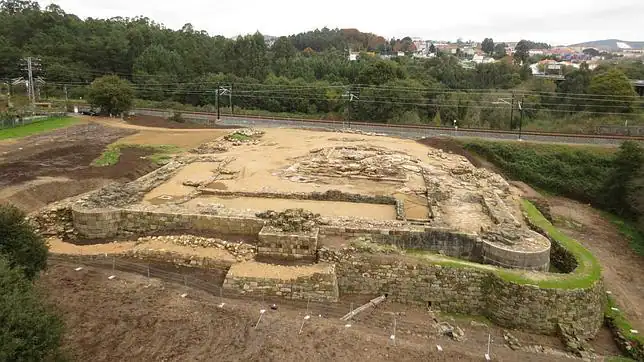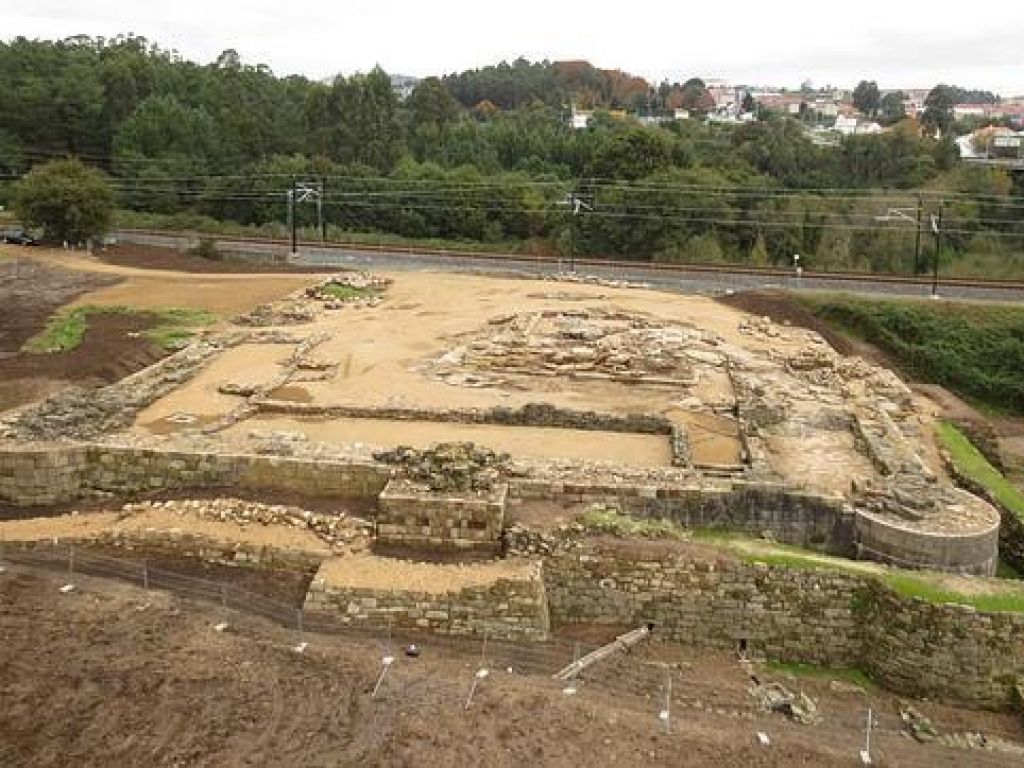The castle of Rocha Forte: a journey through the history of Compostela
The castle of Rocha Forte located in Conxo is a medeival fortress of the 12th century.
Very close to the center of Santiago de Compostela, we found the remains of the most significant castle in the Galician capital. Today, this archaeological site, is what remains of what was once one of the greatest rebellions and symbol of the feudal oppression of the peasants.
The fortress is located in the area of Conxo, into the municipality of Santiago de Compostela. It is located next to the railway line, for this reasons these ruins were discovered. In 2001 the archaeological campaigns began with the main objective of recovering the environment by granting protection measures such as the creation of an Archaeological Site or its appointment as a Cultural Interest Site.
The castle of Rocha Forte was conceived as the exterior projection of the cathedral of Santiago. It was a defensive construction of what was the real power of the city: clergy, administration and military; all concentrated in the archbishops of Compostela. This castle also served as a refuge for the archbishops of the city, at a time when social uprisings were the order of the day.
It is curious, because most of the medieval castles are located in a position where the height predominates (position of greater defensive vigilance against possible attacks), but this castle is built on the bank of the river at the bottom of the valley. This construction strategy is because the castle would function as a point of control of the road to the sea. And it is a very important point of defense against the invasions through the Ulla River and the Arousa estuary.
The castle was built in the middle of the 12th century by order of the clergy, it would serve as an archbishop's residence. From its beginnings, the fortress experienced clashes between the clergy and the bourgeoisie, who in this first moment rose because they did not want to depend on the church, but on the crown. In one of those revolts the castle was burned down, and later reconstructed. With the passage of time, dark legends were forged around this area so this place became a hated site and at the same time feared by the inhabitants of the area.
Already at the end of the 15th century this castle was completely demolished in the so-called Revolta dos irmandiños *. The citizens, tired of the abuse of power of the fief, demolished the castle and with it the symbol of that power that oppressed them. It was one of the greatest fighting of the fifteenth century and, after this, the castle was never rebuilt. Some of its stones were used for other constructions, such as the Cathedral of Santiago.
From Art Natura we invite you to learn more about the history of Compostela through a walk through this medieval fortress. There are guided tours and free, upon registration. More information in the following link http://www.santiagoturismo.com/axenda-cultural/visitas-guiadas-al-castillo-de-a-rocha-forte
* This social revolt originated in Galicia in 1467 due to a situation of great social conflict in which prevailed hunger, epidemics and constant abuses of power by the Galician nobility. To this situation of social conflict, joins the political problem of the civil war in Castile. In this way, Santa Irmandade, who leads the revolt as a response to the people's malaise caused by the abuses of the nobles of the fortresses. This movement is booming at the time because of the existence of a kind of justice and anti-seigniorial mentality, typical of medieval Galician society, which rejects the injustices committed by the lords. It is estimated that the irmandiños destroyed around 130 castles and fortresses during the two years that this revolt lasted. This conflict will end in 1469, with the defeat of the irmandiños on the part of the feudal troops.




